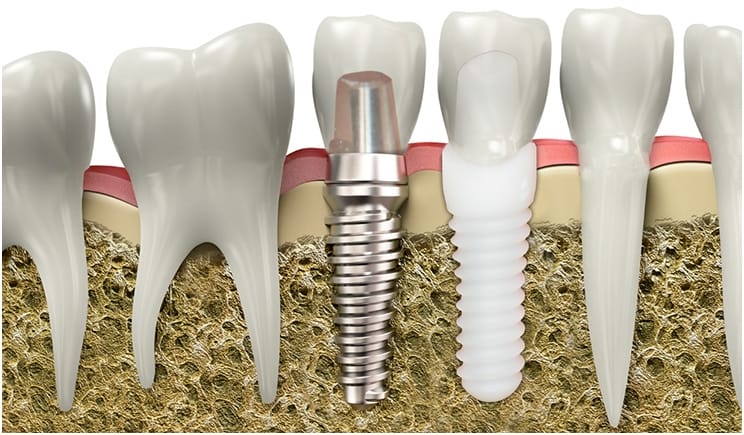Dental Tooth Implant Grandville MI - Dental Implants: Surgery, Purpose & Benefits
The journey towards dental implants begins with an intensive evaluation of the jawbone's condition. When there is insufficient bone density to support an implant, bone article grafting turns into a crucial process to recreate a steady basis. Understanding how much bone grafting is required for this link dental implants tremendously influences the treatment plan, timeline, and general success rate.
The quantity of bone grafting required is determined by multiple factors, together with the extent of bone loss, the implant's size, and the precise location inside the mouth. In circumstances of serious bone loss due to periodontal diseases, trauma, or extended tooth loss, extra extensive grafting could also be needed. Conversely, if the bone loss is minimal, a smaller graft could suffice.
Dental Teeth Implants Holland MI - How Much Do Dental Implants Cost?
The analysis course of typically includes imaging research such as X-rays or 3D scans, allowing the dental professional to visualize the bone structure (Dental Teeth Implants Walker MI). These photographs assist in determining the quality and amount of present bone. If the bone is deemed insufficient, the dentist will then define the appropriate grafting procedures
Grafting can be sourced from various areas. Autografts, which contain harvesting bone from the patient's personal physique, are often deemed the gold commonplace. These supply glorious integration with the present bone but include the disadvantage of further surgery. Other choices include allografts, which use donor bone, and synthetic supplies designed to mimic natural bone. Each option has its own implications on therapeutic and success rates.
After figuring out the required amount of bone grafting, the dental skilled will create a tailored plan for the affected person. This plan may embody the timing of bone grafting in relation to the implant placement. In some cases, a graft may be performed concurrently with the implant surgery. Alternatively, in additional complicated eventualities, a separate therapeutic period is indicated.
Healing timelines range based on the person's health, the extent of grafting, and the type of graft used. Generally, the therapeutic of a bone graft takes several months before an implant could be placed. During this time, bone regeneration happens, resulting in a stable base for the implant.
Full Mouth Dental Implants Grandville MI - Dental Implants - Tooth Replacement
Patients often wonder about the risks related to bone grafting. While issues corresponding to infection or graft failure are attainable, these occasions are relatively rare. Adhering to post-operative care instructions and attending follow-up appointments decrease risks and promote therapeutic.
Once the bone has adequately healed, the dentist assesses the graft's success by evaluating the bone density and stability. If every thing looks favorable, the next steps towards putting the dental implant can begin. The success of this subsequent step largely hinges on the quality of the bone graft and its integration with the surrounding bone.
Cost issues play an essential position within the decision-making process. The expense of bone grafting varies based mostly on materials used, the complexity of the case, and geographic location. It is important for patients to discuss funds upfront to keep away from surprising payments later in the remedy.
Implants Dental Near Me Muskegon Heights MI - Get Dental Implants
Also, patients should have sensible expectations relating to the timeline and outcomes. Many components can influence how a lot bone grafting is required and its overall effectiveness. A collaborative strategy involving the affected person and the dental team not solely ensures clarity but also enhances the probabilities of a successful consequence.

Maintaining good oral hygiene and regular dental visits following the process is significant. These practices can prevent complications and make sure that each the graft and the implant remain secure over time. The ongoing relationship with a dental professional is crucial, particularly in the months following the procedures.
In conclusion, understanding how a lot bone grafting is needed for dental implants encompasses a multi-faceted strategy that considers bone quality, grafting sorts, healing time, and overall affected person health. The stability between achieving the desired aesthetic and useful outcomes whereas minimizing risks and problems is at the heart of dental implant procedures. The journey could also be intensive, but a well-planned method maximizes the chances for a successful, long-lasting result in restorative dental work.
- Determining the quantity of bone grafting required for dental implants usually hinges on the preliminary bone density and volume of the patient's jawbone.
- Each affected person's case is exclusive; components such as previous extractions, periodontal disease, or trauma can affect the necessity for grafting.
- A 3D imaging scan is typically carried out to evaluate the exact dimensions of the obtainable bone and inform the grafting strategy.
- The type of dental implant placement—immediate or delayed—may dictate the amount of bone grafting needed for stability and integration.
- Different forms of graft supplies, such as autografts, allografts, or synthetic options, can influence how much grafting materials is required.
- Assessing the affected person's total health, age, and life-style habits can have an effect on the healing process, influencing graft quantity necessities.
- The depth and placement of the implant can necessitate various quantities of graft materials to safe optimal outcomes.
- Successful integration of the dental implant often depends on adequate bone density, resulting in a tailor-made grafting method for every particular person.
- Consultation with an oral surgeon will present a clearer estimate of the bone grafting needed primarily based on complete evaluations and imaging outcomes.
- Post-grafting healing time varies; thus, a careful analysis is important to find out the ultimate quantity of grafting required for successful implantation.undefinedHow much bone grafting is needed for dental implants?
Dental Implants Cost Wyoming MI - Dental Implants services
What is bone grafting and why is it needed for dental implants?undefinedBone grafting is a surgical process that adds bone or bone-like materials to the jawbone. It is necessary for dental implants when the prevailing bone is insufficient to help the implant, guaranteeing stability and long-term success.
How do I know if I want a bone graft for dental implants?undefinedYour dentist or oral surgeon will evaluate your jawbone through x-rays or 3D imaging to determine its density and volume. If they find that you just lack enough bone, they will suggest a bone graft before proceeding with the dental implant.
Affordable Dental Implants Near Me Norton Shores MI - Dental Implants - Conditions & Treatments
What components affect the quantity of bone grafting needed?undefinedFactors embody the size and location of the implant site, the health and density of existing bone, and individual healing capacity (Dental Implants Affordable Grand Rapids MI). These components assist the dentist decide the appropriate amount of graft material wanted
Are there various sorts of bone grafts used for dental implants?undefinedYes, there are several types, including autografts (from your individual body), allografts (from a donor), xenografts (from animals), and artificial graft supplies. Each type has unique advantages and may be selected based on particular person affected person needs.
Dental Implant Muskegon Heights MI - Dental Implants - Top Oral Surgeon
How long does the bone grafting procedure take?undefinedThe period varies primarily based on the complexity of the grafting process and the extent of the world handled. Generally, a bone grafting process can take anywhere from half-hour to a couple hours, relying on the specific circumstances.
What is the recovery time after a bone graft for implants?undefinedRecovery instances can differ, however usually, preliminary therapeutic would possibly take a couple of weeks, while complete integration of the graft with the bone can take a number of months. Your dentist will provide a personalized timeline based on your situation.

Will I experience pain after the bone grafting procedure?undefinedSome discomfort is widespread after a bone graft, however it's typically manageable with prescribed pain treatment. Most sufferers report that pain diminishes considerably inside a number of days.
Dental Implant Walker MI - Dental Implants Surgical Placement Videos
How does bone grafting affect the general dental implant timeline?undefinedBone grafting could prolong the overall timeline for receiving dental implants, as it requires a therapeutic interval before implants can be positioned. This can add several months to the process however is crucial for a profitable implant placement.

Are there risks associated with bone grafting for dental implants?undefinedLike any surgical procedure, bone grafting carries some risks, corresponding to infection, graft failure, or issues associated to anesthesia. However, when performed by an experienced skilled, these risks are typically low.
Can I even have dental implants positioned immediately after a bone graft?undefinedIn many cases, dental implants can't be positioned immediately after a bone graft as a end result of need for the graft to combine into the present bone. However, some methods, like immediate loading, could enable for this beneath specific conditions. Your supplier will advise you on the most suitable choice primarily based on your circumstances.
Comments on “Implant Dental Muskegon MI - Full Mouth Dental Implants”